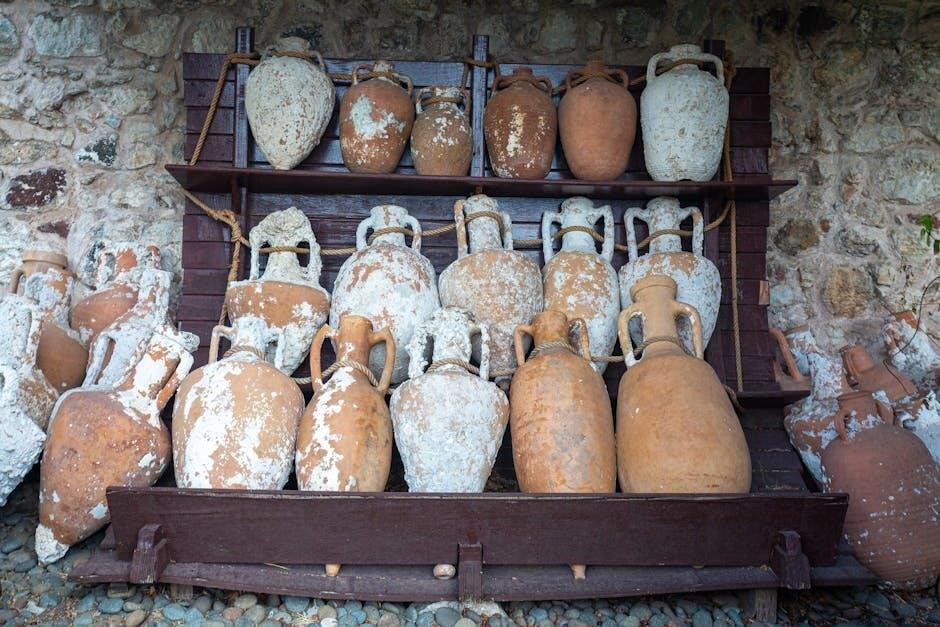
mccoy pottery value guide
Discover the world of McCoy pottery with this comprehensive value guide, designed to help collectors and enthusiasts determine the worth of their pieces. From rare designs to condition impact, this guide covers key factors influencing value. Recent features in Lived in Style magazine highlight the enduring popularity of McCoy pottery, including its glazed flower pots, making it a treasured collectible.

History of McCoy Pottery
The McCoy Pottery Company, established in the late 19th century in Zanesville, Ohio, became a prominent name in American ceramics. Founded by William McCoy, the company initially produced functional stoneware before transitioning to decorative pieces. By the early 20th century, McCoy pottery gained recognition for its high-quality, handcrafted designs, including floral motifs and Art Deco styles. The mid-20th century marked its golden era, with popular items like cookie jars and planters becoming iconic among collectors. Known for its durable construction and vibrant glazes, McCoy pottery catered to both practical and aesthetic needs. Despite facing competition and economic challenges, the company remained operational until its closure in 1990. Today, McCoy pottery is celebrated for its historical significance and enduring appeal, with pieces highly sought after by collectors. Recent features in publications like Lived in Style magazine highlight its lasting influence, showcasing its timeless charm in modern interiors. This rich history underscores the value and legacy of McCoy pottery in the world of ceramics.
How to Identify McCoy Pottery
Identifying McCoy pottery involves examining key characteristics, such as markings, design styles, and construction quality. McCoy pieces often feature distinctive glazes and shapes, with a focus on functional yet decorative designs; Early pieces may bear marks like “McCoy USA” or “McCoy,” while later items might include script logos or model numbers. The company’s stoneware and ceramic products are known for their durable construction and vibrant color palettes, which set them apart from other pottery brands. Collectors should look for telltale signs like the “McCoy” stamp, often in a circular or arched format, and the use of earthy tones and floral motifs. Some pieces, particularly older ones, may lack explicit markings, making identification more challenging. In such cases, consulting reference guides or experts can help confirm authenticity. The recent mention of McCoy pottery in publications like Lived in Style magazine underscores its popularity and distinctive appeal, making it easier for enthusiasts to recognize and value these pieces. By combining careful observation with historical knowledge, collectors can confidently identify McCoy pottery and appreciate its unique charm.
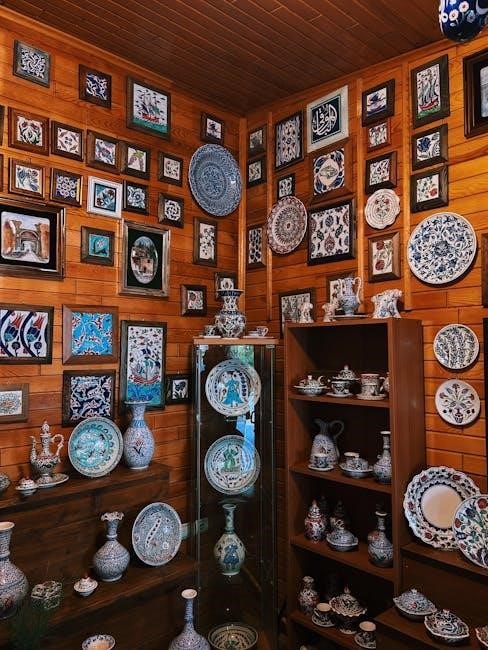
Understanding McCoy Pottery Markings and Signatures
McCoy pottery is renowned for its distinctive markings and signatures, which play a crucial role in identifying and valuing pieces. Early McCoy pieces often bear the “McCoy USA” stamp, while later items may feature script logos or model numbers. These marks not only confirm authenticity but also provide insights into the piece’s production era. Over the years, McCoy used various stamps, including arched and circular formats, which evolved alongside the company’s design trends. Some pieces may lack explicit signatures, especially older or more common items, making identification more challenging. However, even unsigned pieces can often be identified by McCoy’s characteristic glazes and design styles. The condition and clarity of these marks significantly impact a piece’s value, with well-preserved signatures commanding higher prices. Additionally, certain rare or unique signatures associated with specific artists or lines are highly sought after by collectors. By carefully examining these markings, enthusiasts can uncover the history and value of their McCoy pottery treasures;
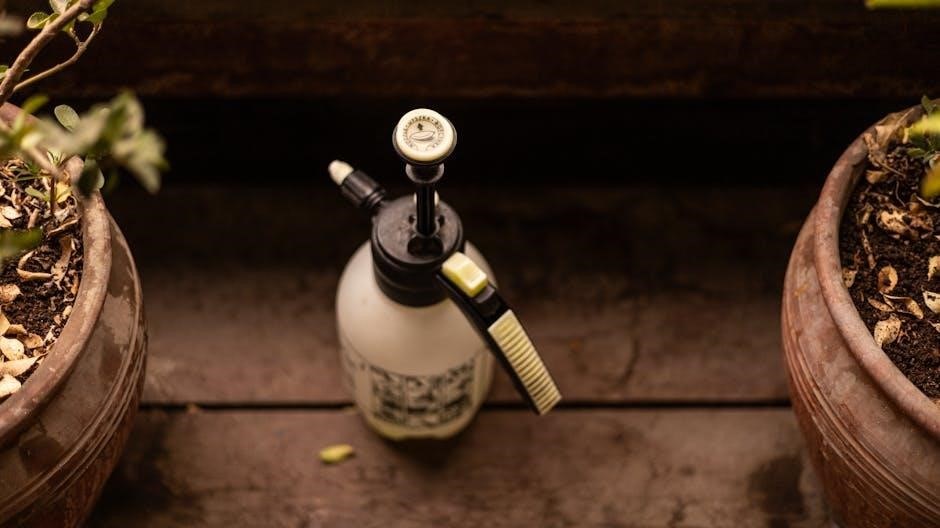
Determining the Age of McCoy Pottery Pieces
To determine the age of McCoy pottery pieces, start by examining the marks and signatures. Many pieces feature a “McCoy USA” stamp, which can provide clues about the production era. However, some older pieces may lack marks, making identification challenging. Consider the style and design, as McCoy is known for specific designs like planters and cookie jars. Vintage or retro styles may indicate an earlier era. Researching collector communities, official guides, and historical records can offer insights, as they often list production dates. Comparing your piece to similar ones online or in forums can also help, especially if styles were popular during certain decades. The condition of the piece, while not always reliable, can provide hints. Materials and glaze techniques may have evolved over the years, and identifying these could aid in dating. Consulting with experts or appraisers is also valuable, as they can offer precise insights. By combining these methods, you can more accurately determine the age of your McCoy pottery piece.

Factors Affecting the Value of McCoy Pottery
The value of McCoy pottery is influenced by rarity, condition, size, color variations, and demand. Unique designs, such as figural pieces or vintage planters, often command higher prices. Glazed finishes and historical significance, as noted in Lived in Style magazine, also play a role.

Rarity of McCoy Pottery Pieces

Rarity significantly impacts the value of McCoy pottery, with limited production runs and unique designs driving desirability. Pieces produced in smaller quantities, such as certain figural items or specific glaze variations, are highly sought after by collectors. The scarcity of particular designs, especially those discontinued early in production, further enhances their value. For instance, certain McCoy cookie jars and planters are rare due to their limited production periods, making them highly valuable. Additionally, experimental or one-of-a-kind pieces, often created by skilled artisans, are exceedingly rare and command premium prices. Ki Nassauer, as featured in Lived in Style magazine, highlights the allure of rare glazed flower pots, including McCoy pieces, which are treasured for their uniqueness and craftsmanship. Collectors and enthusiasts are willing to pay more for these elusive items, making rarity a cornerstone in determining the value of McCoy pottery.
Condition and Its Impact on Value
Condition plays a pivotal role in determining the value of McCoy pottery, with flawless pieces commanding higher prices. Even minor chips, cracks, or glaze imperfections can significantly reduce a piece’s worth. Collectors prioritize items in pristine condition, as they reflect the original craftsmanship and aesthetic appeal. Fading, discoloration, or wear from use can also diminish value, especially in pieces with intricate designs or vibrant glazes. Additionally, repairs or restorations, even if skillfully done, are often viewed as diminishing the piece’s authenticity and value. Ki Nassauer, as mentioned in Lived in Style magazine, emphasizes the importance of condition when evaluating glazed flower pots, including McCoy pieces. For collectors, the preservation of the pottery’s original state is crucial, making condition a key factor in appraisals and sales. Therefore, maintaining McCoy pottery in excellent condition is essential for retaining and maximizing its value in the collector’s market.
Size and Scale of McCoy Pottery
The size and scale of McCoy pottery significantly influence its value, with larger and more intricately designed pieces often fetching higher prices. Collectors tend to seek out substantial, visually striking items that showcase the craftsmanship of the McCoy brand. Smaller pieces, while still valuable, may not command the same premiums unless they feature rare designs or exceptional glazing. Ki Nassauer, in Lived in Style magazine, highlights how larger glazed flower pots, such as those from McCoy, Shawnee, and USA, are particularly sought after for their decorative appeal. The scale of a piece can also impact its functionality, with planter sizes ranging from petite to expansive, catering to different collector preferences. Larger pieces are often displayed as statement items, enhancing their desirability. Conversely, oversized pieces may face challenges in finding suitable spaces, balancing their value potential. Ultimately, the size and scale of McCoy pottery are critical factors in determining both its aesthetic and monetary worth, making it essential for collectors to consider these elements when evaluating or purchasing pieces.
Color Variations in McCoy Pottery
Color variations in McCoy pottery play a significant role in determining its value, with certain hues and glazes being more sought after than others. The company was known for its vibrant and diverse color palette, which ranged from muted earth tones to bold, rich shades. Rare color combinations or unique glazing techniques can elevate the value of a piece, particularly if they are in excellent condition. For instance, pieces featuring uncommon colors like cobalt blue or lime green often command higher prices due to their scarcity. Ki Nassauer’s recent feature in Lived in Style magazine emphasizes the allure of glazed flower pots, highlighting how their color variety contributes to their collectible appeal. Condition is crucial, as well-preserved glazes maintain their vividness, enhancing the piece’s aesthetic and monetary value. Collectors often prioritize pieces with consistent, unfaded colors, as these are indicative of quality craftsmanship. The interplay of color and condition underscores the importance of carefully evaluating McCoy pottery to assess its true worth in the market.
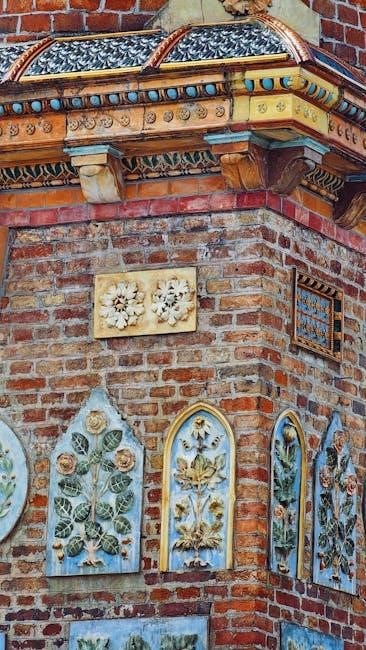
Demand for Specific McCoy Pottery Designs
Demand for specific McCoy pottery designs significantly influences their value, with certain patterns and shapes being highly sought after by collectors. The company produced a wide range of designs, from functional pieces like planters and cookie jars to decorative figurals and wall pockets. Among these, McCoy cookie jars and planters are particularly popular, often fetching high prices at auctions and vintage markets. Ki Nassauer’s feature in Lived in Style magazine highlights the enduring appeal of glazed flower pots, which are among the most desired McCoy pieces. Additionally, limited editions and unique figurals, such as animal shapes or seasonal themes, tend to attract strong demand due to their rarity and artistic detail. Collectors also favor designs with intricate glazing techniques or those that reflect mid-century modern aesthetics. The specificity of a design’s popularity can vary over time, but certain iconic pieces remain consistently in demand. This fluctuating interest underscores the importance of staying informed about current trends in the McCoy pottery market to determine accurate valuations. By focusing on these sought-after designs, collectors can make informed decisions when buying or selling McCoy pottery.
Popular McCoy Pottery Pieces and Their Values
McCoy pottery is highly sought after, with popular pieces like glazed flower pots, planters, and cookie jars. Their values vary based on rarity, condition, and design popularity. Recent features in Lived in Style magazine highlight their enduring appeal among collectors and enthusiasts.
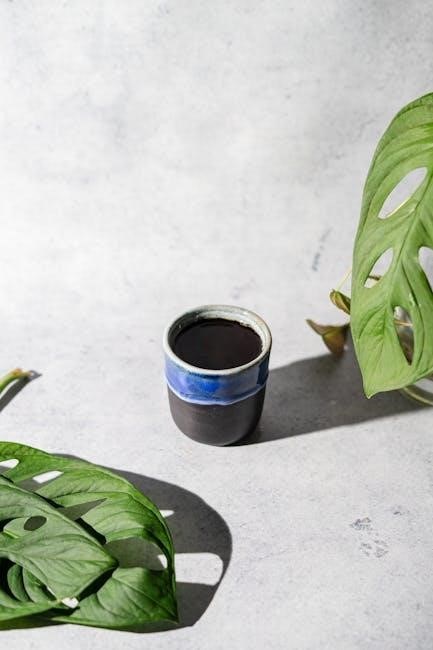
McCoy Cookie Jars: A Collector’s Favorite
McCoy cookie jars are among the most beloved and sought-after pieces by collectors. Known for their nostalgic charm and vibrant designs, these jars often feature playful themes, such as animals, vegetables, or holiday motifs. Their durable construction and colorful glazes have made them both functional and decorative, appealing to enthusiasts of mid-century pottery.
The value of McCoy cookie jars varies significantly based on rarity, condition, and design. Limited-edition or discontinued designs, such as the “Mammy” or “Cheerio” jars, can command high prices at auctions and collector markets. Collectors should look for jars in excellent condition, as chips, cracks, or faded glazes can reduce their value.
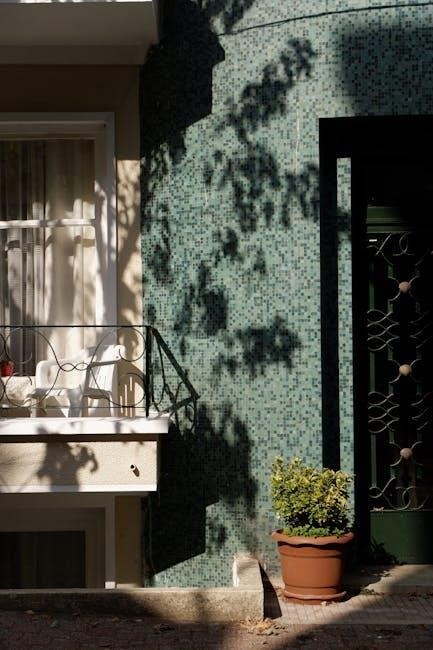
Prices for McCoy cookie jars generally range from $50 to several hundred dollars, depending on the specific piece. Rare examples, such as the 1950s “Lamb” jar, can fetch upwards of $500. Whether you’re a seasoned collector or just starting your collection, McCoy cookie jars offer a delightful blend of history, artistry, and functionality.
McCoy Planters and Their Market Value
McCoy planters are highly sought after by collectors for their unique designs and vibrant glazes, making them both functional and decorative. These planters often feature elegant shapes and intricate details, appealing to those who appreciate mid-century pottery. Their market value varies based on factors like rarity, condition, and size.
Rare and larger planters, such as those with unique molds or limited production runs, tend to command higher prices. For example, planters with unusual shapes or special edition glazes can sell for hundreds of dollars. Collectors should also look for planters in excellent condition, as minor flaws can significantly impact value.
Average prices for McCoy planters range from $50 to $200, depending on the design and size. However, rare examples, such as the “Wicker” or “Basketweave” planters, can fetch upwards of $500. Whether you’re a seasoned collector or just starting, McCoy planters offer a blend of artistry and functionality that makes them a timeless addition to any collection.
McCoy Figural Pieces: Unique and Valuable
McCoy figural pieces are among the most unique and sought-after items in the world of pottery collecting. These pieces, often shaped like animals, people, or mythical creatures, showcase the artistic ingenuity of McCoy pottery. Their intricate designs and vibrant glazes make them stand out as both decorative and functional art.
The value of McCoy figural pieces is influenced by several factors, including rarity, condition, and demand. Rare pieces, such as certain animal figures or limited-edition designs, can command high prices at auctions and among collectors. Additionally, the condition of the piece plays a significant role, as even minor flaws can reduce its value. Perfect, undamaged examples are highly prized and often fetch premium prices.
Some McCoy figural pieces, like the iconic “Lamb” or “Scottie Dog,” are particularly popular among collectors. These pieces not only reflect the charm of mid-century design but also hold sentimental value for many. With proper care and authentication, McCoy figural pieces can be both a delightful addition to a collection and a smart investment. Their unique blend of artistry and nostalgia ensures they remain timeless treasures in the world of pottery.